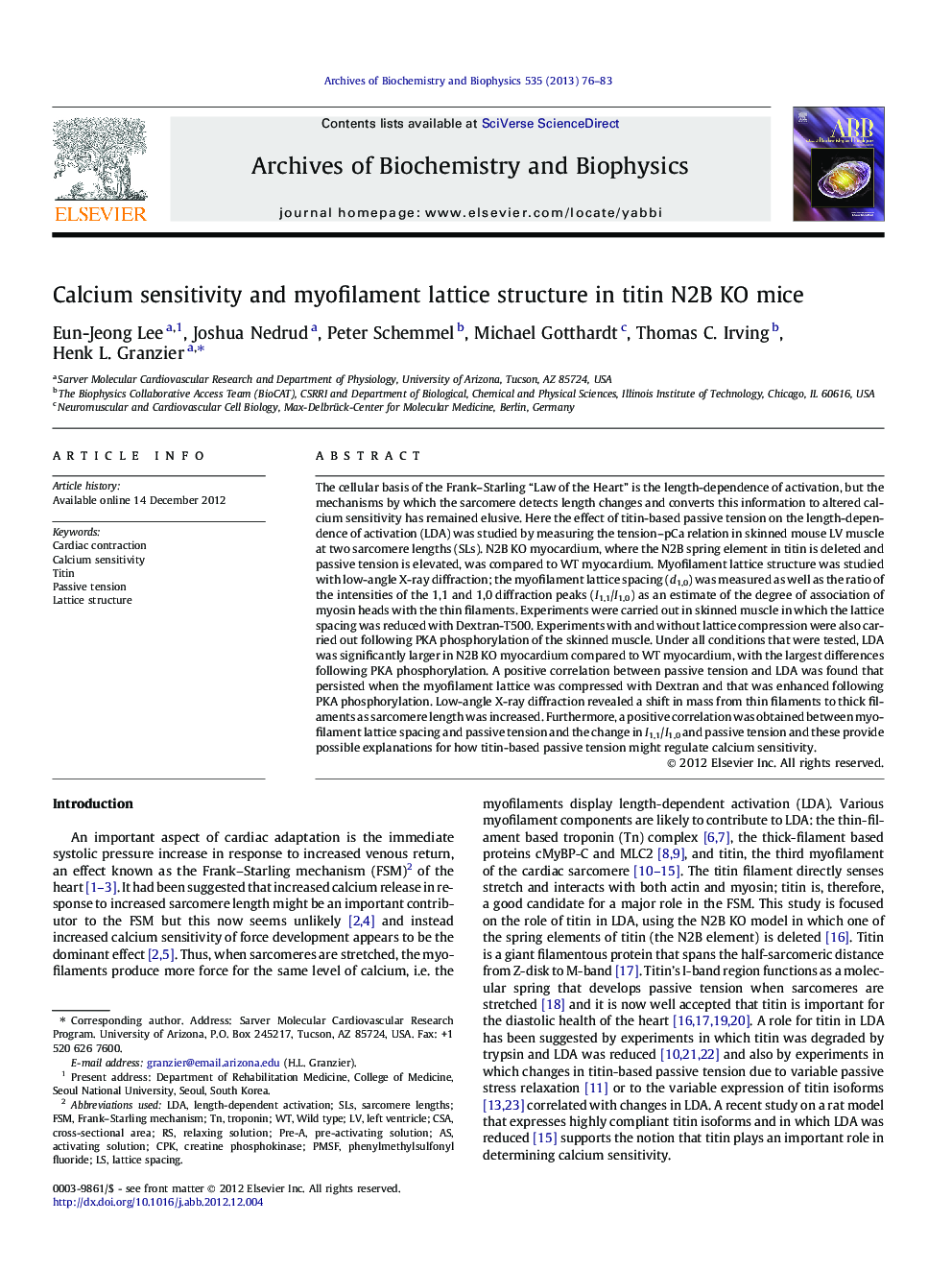| Article ID | Journal | Published Year | Pages | File Type |
|---|---|---|---|---|
| 1925374 | Archives of Biochemistry and Biophysics | 2013 | 8 Pages |
The cellular basis of the Frank–Starling “Law of the Heart” is the length-dependence of activation, but the mechanisms by which the sarcomere detects length changes and converts this information to altered calcium sensitivity has remained elusive. Here the effect of titin-based passive tension on the length-dependence of activation (LDA) was studied by measuring the tension–pCa relation in skinned mouse LV muscle at two sarcomere lengths (SLs). N2B KO myocardium, where the N2B spring element in titin is deleted and passive tension is elevated, was compared to WT myocardium. Myofilament lattice structure was studied with low-angle X-ray diffraction; the myofilament lattice spacing (d1,0) was measured as well as the ratio of the intensities of the 1,1 and 1,0 diffraction peaks (I1,1/I1,0) as an estimate of the degree of association of myosin heads with the thin filaments. Experiments were carried out in skinned muscle in which the lattice spacing was reduced with Dextran-T500. Experiments with and without lattice compression were also carried out following PKA phosphorylation of the skinned muscle. Under all conditions that were tested, LDA was significantly larger in N2B KO myocardium compared to WT myocardium, with the largest differences following PKA phosphorylation. A positive correlation between passive tension and LDA was found that persisted when the myofilament lattice was compressed with Dextran and that was enhanced following PKA phosphorylation. Low-angle X-ray diffraction revealed a shift in mass from thin filaments to thick filaments as sarcomere length was increased. Furthermore, a positive correlation was obtained between myofilament lattice spacing and passive tension and the change in I1,1/I1,0 and passive tension and these provide possible explanations for how titin-based passive tension might regulate calcium sensitivity.
► We studied passive tension, length-dependent activation (LDA), and muscle structure. ► A positive correlation between titin-based passive tension and LDA was found. ► Passive tension and myofilament lattice spacing were positively correlated. ► A shift in mass from thin filaments to thick filaments occurred.
